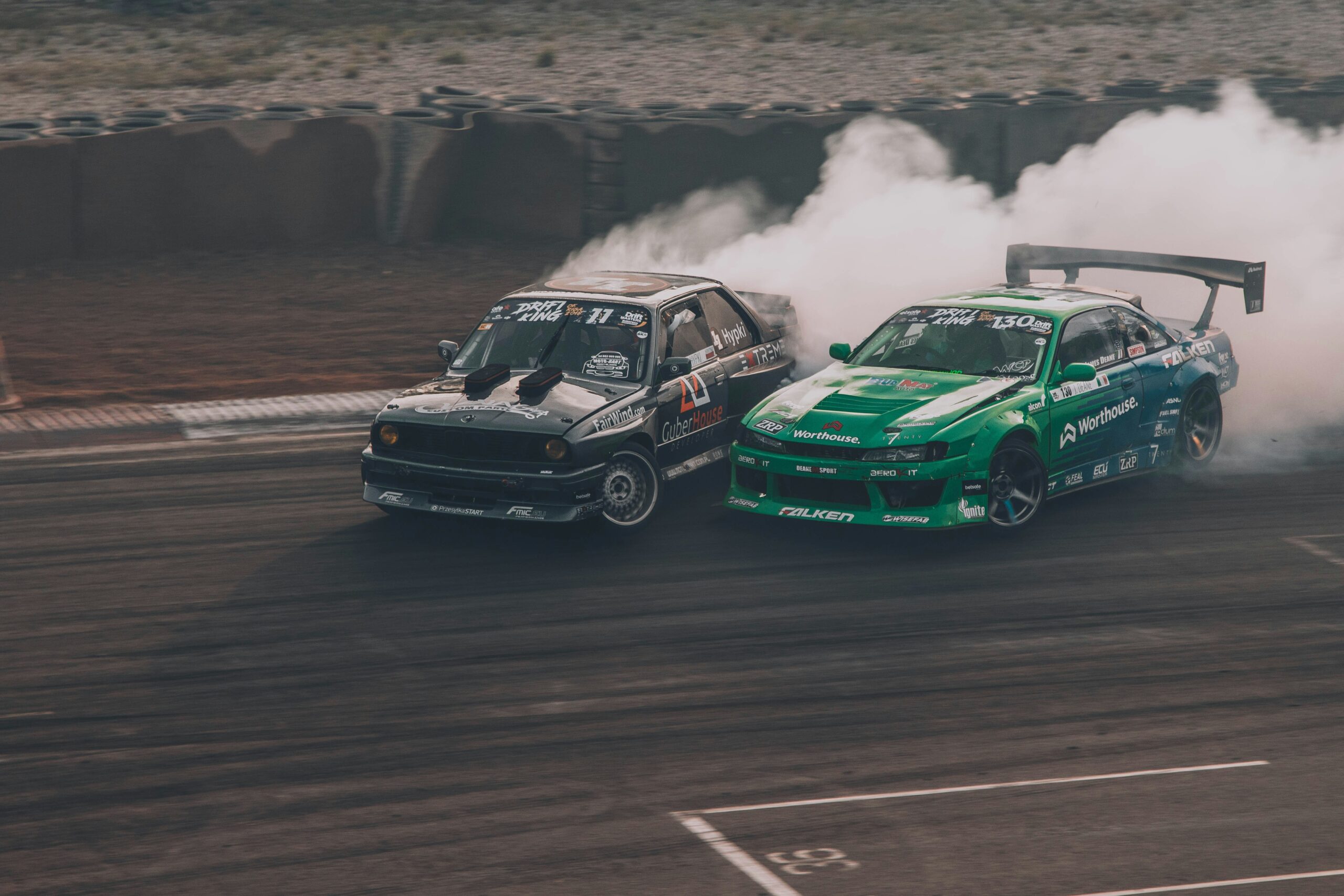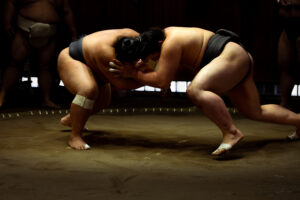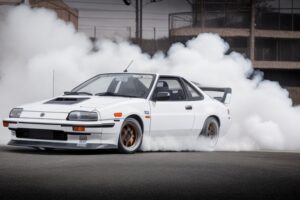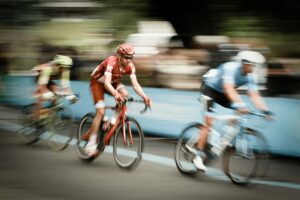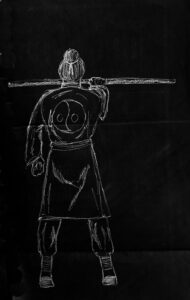In the heart of Japan, where tradition meets modern innovation, lies the pulse-pounding world of drift competitions, a spectacle where adrenaline and precision dance in a high-octane ballet. Drifting, a driving technique where the driver intentionally oversteers, with loss of traction, while maintaining control and driving the car through the entirety of a corner, has evolved from underground street racing to a celebrated motorsport. This article delves into the thrilling world of Japanese drift competitions, exploring the legacy, techniques, and community behind this exhilarating sport.
The Art of Drift: Japan’s Racing Legacy
Japan has long been recognized as the birthplace of drifting, a legacy that stretches back to the late 20th century. It was in the winding mountain passes and isolated roads of Japan that the art of drift was honed by racers looking for the fastest way down. This legacy of speed, skill, and sheer daring has been passed down through generations, becoming an integral part of Japan’s motorsport culture. Today, drifting competitions are a showcase of this rich history, blending tradition with the relentless pursuit of automotive excellence. The tracks, often steeped in history, are more than mere venues; they are sacred grounds where the past and present of drifting converge.
Engines Roar: The Thrill of Drifting Explained
The essence of drifting lies in the exhilarating ballet of control amidst chaos. As engines roar to life, the air thickens with anticipation. The sound of tires screeching against asphalt becomes a symphony, punctuated by the roar of turbocharged engines. Drifting is not just about speed; it’s about the art of maneuvering a car beyond its limits while maintaining a delicate balance between control and reckless abandon. The thrill comes from the driver’s ability to harness the power of their machine, executing precise maneuvers with inches to spare. It’s this dance on the edge of physics that draws spectators and drivers alike to the sport.
Adrenaline and Precision: An Inside Look
Behind the smoke and tire marks lies a world of precision engineering and nerves of steel. Drift competitors are equal parts athlete and artist, each movement calculated with precision, yet executed with the flair of improvisation. The cockpit of a drift car is a study in focus; drivers must be acutely aware of their speed, angle, and trajectory, all while maintaining an aggressive line that will impress judges and spectators. The adrenaline rush of sliding sideways at high speeds is matched only by the meticulous preparation and skill required to execute each drift perfectly.
The Rules of Engagement: Drift Competition 101
Drift competitions are governed by a set of rules designed to test the limits of both driver and machine. Competitors are judged based on speed, line, angle, and showmanship, with each element playing a crucial role in their overall score. The "line" refers to the predetermined path drivers must follow, optimized for speed and angle. The "angle" is the car’s sideways position relative to the drift, with greater angles generally scoring higher. "Speed" measures the car’s velocity through the course, and "showmanship" encapsulates the driver’s ability to wow the crowd with their skill and precision. These competitions are not just about who crosses the finish line first but about who does it with the most style and control.
Drift Kings: Heroes of the Japanese Circuit
In the world of Japanese drifting, there are those who have risen above the rest to become legends. Known as "Drift Kings," these individuals have mastered the art of sliding, earning respect and admiration from peers and fans alike. They are not just drivers; they are pioneers, constantly pushing the boundaries of what’s possible on four wheels. With their iconic cars, daring maneuvers, and unwavering dedication, these heroes of the circuit inspire a new generation of drifters, proving that with enough skill, passion, and determination, anyone can claim the throne.
Navigating the Corners: Techniques and Tactics
Drifting is an art form that requires a deep understanding of both car and course. Drivers employ a variety of techniques to navigate corners with precision and flair. From the initiation of the drift, using methods like the clutch kick or handbrake turn, to the careful modulation of throttle and steering to maintain control, every move is deliberate. Tandem drifting adds another layer of complexity, with two cars drifting in close proximity, mirroring each other’s movements in a high-speed dance. The key to success lies in the driver’s ability to anticipate and react, turning each corner into an opportunity to demonstrate their skill and creativity.
The Role of Technology in Modern Drifting
As drifting has evolved, so too has the technology that powers it. Today’s drift cars are marvels of engineering, equipped with advanced suspension setups, turbocharged engines, and sophisticated aerodynamics. The integration of technology extends beyond the cars themselves, with data analysis playing a crucial role in optimizing performance. Sensors and telemetry provide real-time feedback, allowing teams to make adjustments to everything from tire pressure to suspension settings. This marriage of technology and tradition is pushing the boundaries of what’s possible, enabling drivers to perform more daring maneuvers with greater precision.
The Culture Behind the Smoke: Drift Community
At the heart of Japan’s drifting scene is a vibrant community of enthusiasts, mechanics, and spectators. This community is bound by a shared passion for the sport, a commitment to innovation, and a spirit of camaraderie. Drift events are more than just competitions; they are gatherings where people from all walks of life come together to celebrate their love for the sport. The community’s support is evident in the pits, where teams work tirelessly to prepare their cars, and in the stands, where fans cheer on their favorite drivers. This sense of belonging is what makes the drift scene unique, fostering an environment where everyone, from seasoned pros to aspiring drifters, can thrive.
From Streets to Stardom: The Drift Journey
The journey from street-level drifter to professional competitor is one of dedication, skill, and a bit of luck. Many of Japan’s top drifters began their careers on the secluded roads of the countryside, honing their skills away from the public eye. Through perseverance and a relentless desire to improve, these drivers transitioned from underground races to the professional circuit. Today, they stand as testaments to the transformative power of drift, inspiring others to follow in their tire tracks. Their stories of triumph and adversity shine a light on the path from obscurity to stardom, highlighting the sport’s ability to change lives.
The Global Impact of Japan’s Drifting Scene
Japan’s drifting culture has transcended borders, inspiring a global movement of drift enthusiasts. From the United States to Europe and beyond, the influence of Japanese drift is unmistakable. International competitions often feature Japanese drivers, cars, and techniques, a nod to the sport’s roots. This global exchange of ideas and styles has enriched the drifting scene, fostering a worldwide community united by a common passion. The spread of drifting culture has also led to the adoption of safety standards and competitive rules modeled after Japan’s, ensuring the sport’s sustainable growth and popularity across the globe.
Safety Measures in the World of Competitive Drifting
As the popularity of drifting has grown, so too has the emphasis on safety. Modern drift competitions are highly regulated events, with strict safety protocols in place to protect drivers, teams, and spectators. Cars are equipped with roll cages, fire suppression systems, and other safety features, while drivers are required to wear helmets, fire-resistant suits, and harnesses. Tracks are designed with safety in mind, featuring runoff areas and barriers to minimize the risk of accidents. These measures ensure that the thrill of drifting can be enjoyed without compromising the well-being of those involved.
Looking Ahead: The Future of Drifting Competitions
The future of drifting competitions looks brighter than ever, with technological advancements and a growing global community driving the sport forward. Innovations in electric vehicles and alternative fuels promise to redefine what’s possible, offering new challenges and opportunities for drivers and engineers. The increasing popularity of drifting around the world is also opening doors to international collaborations and events, further elevating the sport’s profile. As drifting continues to evolve, its spirit of innovation, community, and sheer exhilaration remains unchanged, promising a future filled with tire smoke, roaring engines, and heart-stopping action.
The world of Japanese drift competitions is a testament to the enduring appeal of motorsport, where tradition and innovation intersect to create a spectacle unlike any other. From the mountains where it all began to the global stage, drifting remains a thrilling expression of skill, creativity, and community. As drivers continue to push the limits of what’s possible, and fans gather to witness the art of the perfect drift, the legacy of Japan’s racing culture lives on, fueling the passion of generations to come.
